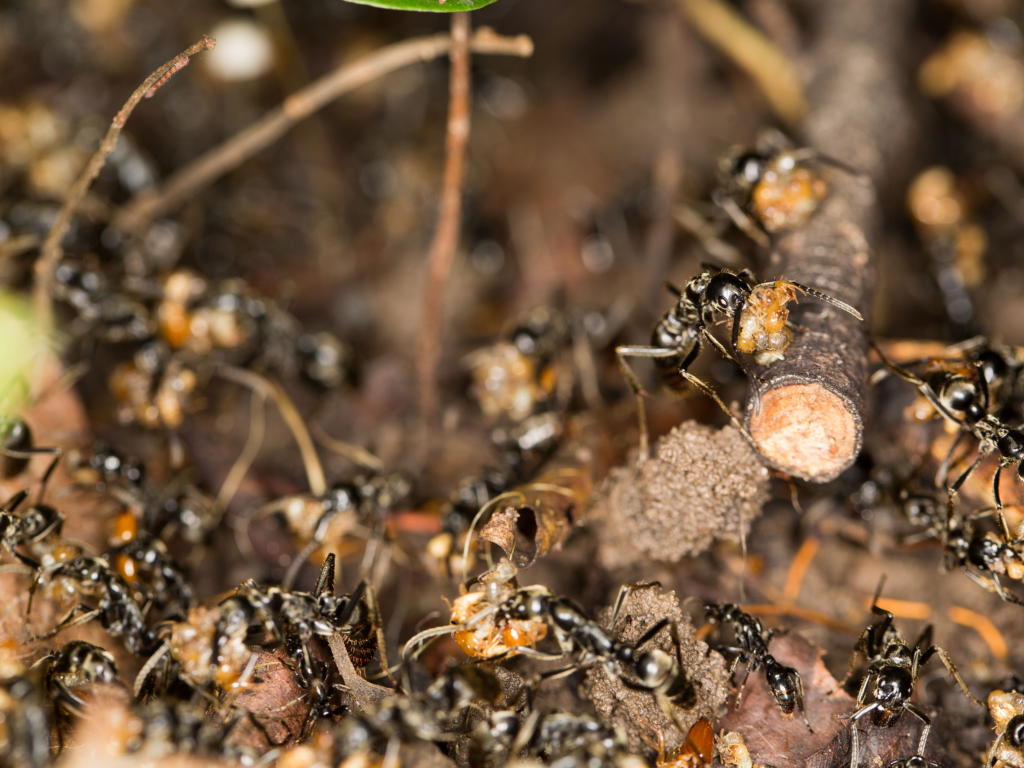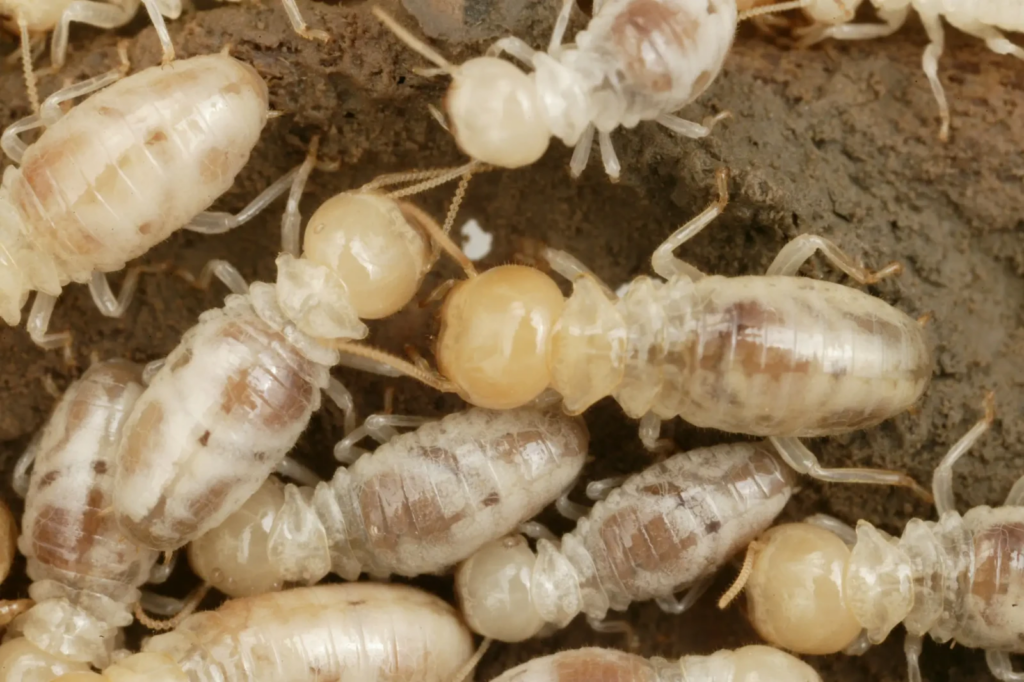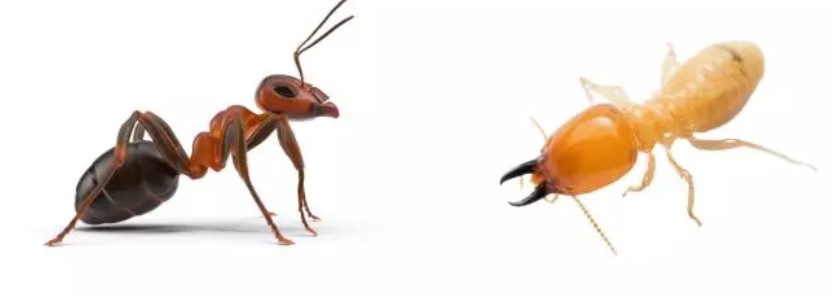Homeowners often deal with pests like ants and termites. But, these bugs are not the same. They belong to different groups and can harm your home in different ways.
It’s important to know the difference between these pests. This knowledge helps you fight them better. Both can damage your home, but they act and live differently.
At Vinx Pest Control, we teach you to protect your home. Knowing your enemy is the first step to keep your home safe from these pests.
Key Takeaways
- Ants and termites are distinct insect groups often confused with each other.
- Understanding their differences is key to effective pest control.
- Both ants and termites can cause significant damage to homes.
- Proper identification is important for the right control measures.
- Vinx Pest Control offers expert solutions for managing these pests.
The Hidden Threat to American Homes
Ants and termites are a big problem for American homes. They can damage homes a lot, leading to expensive fixes.
Why Ants and Termites Are Concerning for Homeowners
Homeowners worry about ants and termites because they can harm homes. Termites alone damage homes for about $5 billion each year in the U.S.
The Economic Impact of Insect Infestations
Ants and termites cost a lot of money. They damage homes and cost money to prevent and treat.
Property Damage Statistics
- Termites damage over $5 billion in property each year.
- Carpenter ants can also damage wood structures a lot.
Health and Safety Concerns
Ants and termites are not just a problem for homes. They can also hurt people’s health. Some ants can bite painfully, and termites can make breathing problems worse by causing allergies. To fight these problems, homeowners can learn how to check for termites themselves. This helps find and stop problems early.

Identifying Common Ant Species in the United States
Knowing the types of ants in American homes is key for good pest control. The U.S. has many ant species, some of which can harm or bother us.
Carpenter Ants: The Wood Destroyers
Carpenter ants are very bad for homes. They can dig through wood and damage buildings. For more info, check Vinx Pest Control’s page on carpenter ants.
Identification Features
- Large size: Carpenter ants are bigger than most ants.
- Color: They are black or dark brown.
- Nesting sites: Find nests in wet wood, like near leaks or in rotting tree stumps.
Typical Behavior Patterns
Carpenter ants live in organized groups. They are active at different times, depending on where they are. They search for food far from their homes.
Fire Ants: Aggressive Invaders
Fire ants sting painfully, causing redness, swelling, and blisters. They get angry easily and can sting many times.
Other Household Ant Species to Watch For
Other common ants include odorous house ants, pavement ants, and pharaoh ants. Each has its own look and behavior. Knowing these helps homeowners fight infestations better.
Understanding Termite Types and Behavior
Knowing about termite behavior is key for homeowners. Termites can damage homes a lot in the United States. It’s important to know the different types and how they act.
Subterranean Termites: America’s Most Destructive Pest
Subterranean termites are very harmful in the United States. They live underground and can damage homes a lot.
Mud Tubes and Underground Colonies
These termites make mud tubes to move around. These tubes show they are active.
Feeding Patterns and Damage
They eat wood and other cellulose materials. If not stopped, they can harm a home’s structure a lot.
Drywood Termites: Silent Invaders
Drywood termites live in dry wood and don’t need soil. They can damage wood and furniture a lot.
Formosan Termites: The “Super Termite” Threat
Formosan termites are very aggressive and can cause a lot of damage. They are a big problem in many places in the United States.
By knowing about termites and their ways, homeowners can protect their homes. Spotting termite signs and knowing how they eat is key to stopping them.
Ants and Termites: Key Differences Homeowners Should Know
Ants and termites look alike but are not the same. Knowing the differences is key to keeping your home pest-free.
Physical Characteristics for Proper Identification
Looking at ants and termites can tell you which is which. Here are some important features:
Wing Structure and Body Shape
Ants have narrow waists and bent antennae. Termites have broad waists and straight antennae. Termites also have wings that are the same size.
Color and Size Variations
Ants come in many colors and sizes. Termites are usually light-colored and the same size.
Behavioral Differences: Nesting, Feeding, and Swarming
Ants and termites act differently. Ants are often seen looking for food. Termites hide and eat wood and other cellulose materials.

Seasonal Activity Patterns
Ants and termites are active at different times. Ants swarm in warmer months. Termite swarms happen at various times, depending on the species and where you live.
Warning Signs of Ant Infestation in Your Property
Ants in your home are not just a bother. They warn of a bigger problem. Spotting these signs early helps stop big damage.
Visual Indicators That Shouldn’t Be Ignored
Seeing ants is often the first sign. Look out for:
- Ants marching in a line to food
- Small piles of soil or debris near cracks
These signs mean ants have invaded and are looking for food and a place to nest.
Detecting Ant Trails and Entry Points
Finding ant trails is key. They show where ants come into your home. Look at cracks in walls, floors, and around windows and doors.
Common Areas for Ant Nests Around Your Home
Ants like places that are safe and moist. They nest near food, in wet soil, or in your home’s structure. Find these spots and block their way. For more on ant problems, check Vinx Pest Control.
Detecting Termite Presence Before Major Damage Occurs
Finding termites early can save a lot of money. Termites can damage a home’s structure before anyone notices. Knowing the signs and how to check for damage can help a lot.
Early Warning Signs Every Homeowner Should Know
Look out for signs of termites. Some important signs include:
- Mud tubes on walls or ceilings
- Discarded wings near windows or doors
- Frass, or termite droppings, that look like sawdust or coffee grounds
Assessing Structural Damage from Termite Activity
It’s important to check how much damage termites have done. Look for signs in the wood and other parts of the structure.
Wood Damage Assessment Techniques
When checking wood for termites, look for:
- Hollowed-out wood
- Discolored or sagging wood
- Mud tubes in the wood
Identifying Termite Frass and Discarded Wings
Frass and discarded wings show termites are around. Frass looks like sawdust or coffee grounds. Wings are often near light sources.

Hidden Colonies: Where Termites Typically Hide
Termites hide in hard-to-reach places. They like walls, under floors, and behind wood. Knowing where they hide helps find and treat them.
DIY Prevention and Control Methods for Ants and Termites
Homeowners can keep ants and termites away with simple steps. Keeping your home clean and tidy helps a lot. This way, you can stop these pests from coming in.
Home Maintenance Practices That Deter Pests
Keeping your home in good shape is key. This means:
- Checking your home for pests often
- Sealing cracks and gaps around your home
- Keeping your yard clean and free of mess
Moisture Control Strategies
Ants and termites love moisture. To keep them away:
- Fix any water leaks right away
- Make sure water drains well around your home
- Use a dehumidifier in damp places like basements
Wood-to-Soil Contact Elimination
Termites like wood near soil. To stop them:
- Keep wooden things like decks and fences away from soil
- Use wood that won’t get infested by termites near the ground
Natural Deterrents and Household Remedies
Some people like to use natural ways to keep pests away. For example, you can use cinnamon, cayenne pepper, or citrus to keep ants away.
Creating Effective Barriers Against Invasion
Setting up barriers can keep pests out. You can do this by:
- Using diatomaceous earth or sand around your home
- Putting in termite barriers when you build
- Sealing up where pests might get in with caulk or sealant
When to Call Professionals vs. DIY Approaches
Knowing when to use DIY treatments is key for fighting ants and termites. DIY can work for small problems. But, sometimes, you need a pro.
Limitations of Store-Bought Treatments
Store-bought treatments don’t always work well. They can’t get deep into buildings or find the source of the problem. Homeowners might make big mistakes when using these products. They might apply it wrong or miss some areas.
Signs That Indicate Professional Intervention Is Necessary
Here are signs you need a pro:
- Big damage to your house
- Big infestations that are hard to handle
- Infestations keep coming back, even after trying DIY
Cost Comparison: DIY vs. Professional Treatment
DIY might seem cheap at first. But, if it doesn’t work, it can cost more later. Professional help might cost more at first. But, it usually fixes the problem for good, saving you money in the long run.
Vinx Pest Control’s Approach to Ants and Termites
Vinx Pest Control has a complete plan to fight ants and termites. They use the latest tech and make plans just for you. This way, your home stays safe from pests for a long time.
Advanced Inspection Technologies and Methods
Vinx Pest Control uses top-notch tools to find pests early. They use special cameras and meters to spot problems before they get big.
Customized Treatment Plans for Different Infestations
Every pest problem is different. Vinx Pest Control makes special plans for each home. These plans help get rid of ants and termites for good.
Eco-Friendly Treatment Options
Vinx Pest Control cares about the environment. They use safe, green products for treatments. These products are good for families and pets, and they work well against pests.
Long-Term Prevention Strategies
Vinx Pest Control doesn’t just treat pests. They also help prevent future problems. They seal up holes, lower moisture, and more. For ant control in Allen, check Vinx Pest Control’s Allen Ant Control.
Success Stories and Case Studies
Vinx Pest Control has many success stories. Their detailed approach really works. They’ve helped many homes by greatly reducing pest numbers. This gives homeowners peace of mind.
The Long-Term Protection Plan: Ongoing Monitoring and Prevention
To keep your property safe, you need to watch for pests all the time. Fighting ants and termites means you must act early and often. This means checking your place regularly to stop pests before they start.
Recommended Inspection Schedules for Different Regions
How often you check for pests depends on where you live. Places like Dallas, TX, with lots of termites, need more checks. Talk to a pest expert to find out when to check your place. For tips on keeping Dallas, TX, safe from termites, check Vinx Pest Control’s termite protection guide.
Seasonal Considerations for Pest Management
Each season brings its own pest problems. Knowing these can help you stay ahead of ants and termites. For example, termites swarm in spring, and ants are busier in warmer months.
Vinx Pest Control’s Maintenance Programs
Vinx Pest Control has special plans for keeping pests away. These plans include regular checks and treatments made just for you.

Regular Monitoring Benefits
- Early detection of pest activity
- Prevention of extensive property damage
- Reduced risk of costly repairs
Early Intervention Advantages
Acting fast is key to stopping ants and termites. Fixing problems early saves your property and money. Regular checks and upkeep are key to a good protection plan.
Conclusion: Safeguarding Your Home Against Ants and Termites
To keep your home safe from ants and termites, you need to know a lot about them. It’s important to spot the different types and how they act. Also, knowing the signs of an infestation is key.
Managing pests well means using both DIY tricks and getting help from experts. Regular checks and upkeep can catch problems early. This helps avoid big damage costs.
Vinx Pest Control uses the latest tech and custom plans to help homeowners. They teach the value of always watching for pests. This way, homes stay safe and their value stays high.
FAQ
Q: What are the most common types of ants found in American homes?
A: In American homes, you’ll often find carpenter ants, fire ants, odorous house ants, and pavement ants. Each type has its own look and ways of acting.
Q: How can I identify termite damage in my home?
A: Look for mud tubes on walls, discarded wings, and wood that sounds hollow. Also, check for any structural damage and the state of your home’s foundation.
Q: What are the key differences between ants and termites?
A: Ants are hard and have a narrow waist. Termites are soft and have a wide waist. Ants are often seen looking for food. Termites hide in structures.
Q: Can I use natural remedies to control ants and termites?
A: Yes, you can try using diatomaceous earth, essential oils, and vinegar. But, these might not work as well as professional treatments. Always keep your home clean too.
Q: How often should I inspect my home for ants and termites?
A: Check your home for ants and termites at least once a year. If you live in a place where they’re common, do it more often. This helps catch problems early.
Q: What are the benefits of hiring a professional pest control service?
A: Companies like Vinx Pest Control use special tools and make plans just for you. They can get rid of ants and termites for good. They also offer ongoing help to keep your home safe.
Q: How can I prevent ants and termites from infesting my home?
A: Keep your home in good shape by sealing cracks and removing debris. Keep it clean too. Regular checks can spot problems before they get big.
Q: What are the signs of ant infestation I should look out for?
A: Look for ant trails, nests, and wings on the floor. You might see ants looking for food or getting in through small openings.
Q: How do I know if I need professional termite treatment?
A: If you see mud tubes, damaged wood, or wings, you might need a pro. A pro can tell how bad it is and suggest the best way to fix it.
Q: What is the economic impact of ant and termite infestations?
A: Ants and termites can damage your home, furniture, and other things. Fixing this can cost a lot. So, it’s important to stop them early and prevent damage.



